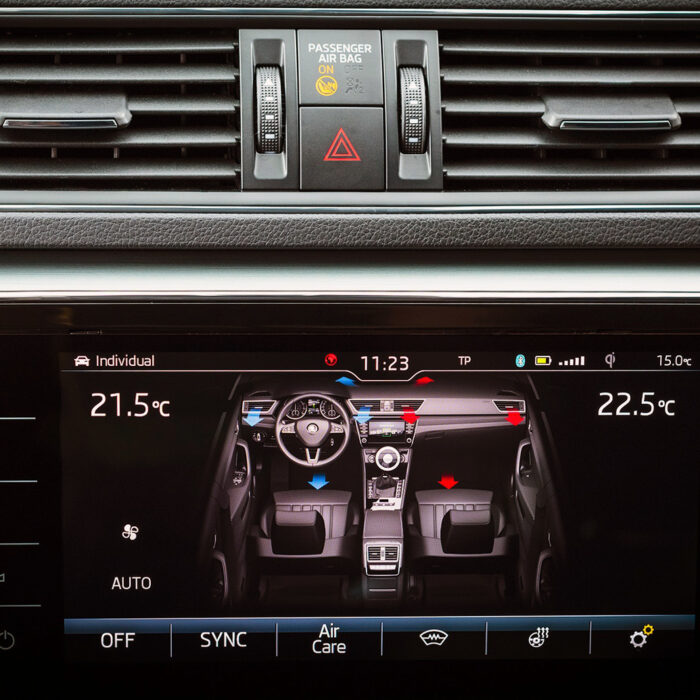Tokyo Motor Show
An amazing phenomenon, unprecedented in the world of automobile designers, has taken place each autumn in Tokyo once in two years since 1954. The Tokyo Motor Show hosts car, motorcycle and commercial vehicle presentations and is sponsored by the Japan Automobile Manufacturers Association (JAMA). How did it happen that the Tokyo Motor Show is now in “big five” and the experts consider it as a global event? Let’s figure it out.
The birth of Japanese automotive culture
After the end of the II World War Japan was listed as defeated. The country has experienced a long and hard recovery from the economic and political collapse, and for many years ordinary Japanese citizens could only afford a bicycle. Nevertheless, nine years after the end of the war, it was decided to organize a large automobile exhibition. This was an idea of Yataka Katayama, then chief marketing officer of the Nissan car company. He was fond of cars and spent a long time persuading various executives of Japanese key companies to take part in the motor show. In the end, Katayama succeeded, and on April 20, 1954, he opened his motor show. It happened in the capital’s Hibiya Park. Officially, the show was known as the 1st Tokio Motor Show. However, the Japanese themselves preferred a different name — Zen-Nihon Jidosha, which literally means “All Japan Motor Show”. For as long as nine days, all Japanese citizens and guests were able to contemplate various brands of cars, including trucks and motorcycles (or more specifically that they prevailed, since there were only 17 passenger cars out of 267 vehicles). The motor show was located mostly in the open air with few pavilions under the roof. But there was a constant queue waiting to get inside and admire the glittering, freshly painted showpieces of the car industry. The world of cars was presented to the public in all its glory, which encouraged the Japanese to once purchase their own cars, sit behind the wheel and enjoy driving picturesque routes. After all, at that time, only a privileged few could afford having a car whereas the ordinary ones could only dream of such an opportunity. The motor show in Hibiya Park turned this opportunity into real images one could touch and which stick in memory for a long time. The amazing world of cars even had its own emblem — a stele, which depicted a male Greek figure. He turned a large wheel which symbolized the ability to stop and move forward despite any difficulties.
“The nothing like anything atmosphere” as a Japanese mentality
In recent years, the global auto industry has tended to pay less and less attention to the Tokyo Motor Show. This was partly because of the growing popularity of the Chinese automobile market. There are no other Asian car manufacturers represented in Tokyo, and there are fewer and fewer major European brands at the exhibition. But the Japanese do not go into pieces. On the contrary, they feel better than ever when “their own people” are around. Their mentality divides the world into “friend-or-foe”. “Self comes first” is not a proverb for them but a concept of the universe. There is what is called its own atmosphere, even if we are talking about a motor show. Only being a part of society, the Japanese feel comfortable. There are only two conditions: you need to benefit society and be an integral part of it so that no one will ever notice you in a crowd. Hence the requirement of mandatory participation in the motor show, if other Japanese participate in the motor show, too. No Japanese major automaker will ever let the “team” down by ignoring the event. Finally, the organization of the Tokyo Motor Show itself is Japan in miniature. We should not hope that everything around us will be robotized and automated — the Japanese like to create jobs for their fellow citizens, if there is even the slightest possibility for this. Therefore, sometimes you may be surprised when seeing a man with a megaphone — he/she will guide the human flow in the right direction. This is Japan’s concern for its people. Why not?
Converting a traditional motor show into a virtual visit
Japanese people are getting more and more concerned about the feasibility of visiting car exhibitions and more and more they believe that it is much more effective and cheaper to hold live car presentations on YouTube. For most European and American companies, the Japanese market is far from a priority, so the rejection of Tokyo screenings is pretty clear — they want to save money. If this trend continues to expand (and it is likely to continue), the Tokyo Motor Show may return to its former name — All Japan Motor Show — with nothing but JDM. From the point of view of business and globalization, this is not particularly good. However, if the Japanese finally go into pieces , they will not regret it for long since they like “their own atmosphere”. They feel happy there without all of us, especially since the number of visitors today is much less than during the peak “zero” years, when 800-900 thousand people came to Tokyo to see the show.

Tokyo Motor Show 2019 — innovations and traditions
The last motor show (and whether the Tokyo Motor Show will be held in 2020, has not yet been decided due to the coronavirus pandemic), which was organized in the fall of 2019, opened at the Big Sight exhibition complex in the port part of the Japanese capital. According to the organizers, about 180 different companies came there to present their cars, including both automakers and suppliers of auto parts and automotive equipment.
The leading Japanese companies such as Toyota, Nissan, Honda, Mazda presented the most large-scale stands while among foreign companies only Renault and Mercedes-Benz visited Tokyo Motor Show 2019. The main theme of the Motor Show was the motto “Introducing the future”.
For the first time, the car show was held at several sites connected by a special zone, where you could test drive cars or try out various types of electric scooters and other autonomous vehicles. Tokyo Motor Show-2019 hosts tried to attract as much audience by providing all necessary facilities for various categories of visitors, including people with disabilities and guests with children.
By the way, Japanese car manufacturers have repeatedly surprised the audience with unique solutions. For example, Toyoda once presented a rubber car that consisted of massive segments resembling cactus sprouts or snowman’s paws. Toyoda concern is actually a tire manufacturer, and it had a great significance for it to show visitors the prospects of rubber structures. The car turned out to be safe for pedestrians since it does not cause injuries when struck at speeds up to 50 km/h. A hidden spatial frame is responsible for the rigidity of the structure. By the way, the sides of the car straighten after crumpling under the influence of electrical impulses. These are the properties of a specially developed nano rubber. The magnificence of such solutions is amazing and does credit to the entire Japanese car industry.

Kei cars — those with an engine capacity of up to 0.66 liters — are extremely popular in the Land of the rising sun. The one who owns such a car may count on significant tax exemption. Despite their size, Kei cars are only slightly longer than smart, but much narrower. The seats in the back row are like in a C-class sedan. The Kei cars offer a full list of options, hundreds of modifications and millions of options for interior transformations. Any stylist will envy the color scheme of these “babies” while duo-tone paint is absolutely standard for the Japanese.
Any car, even if you are not going to demonstrate it to the public on some upscale motor show, needs a driver who has documentary proof of the right to drive (better an international driving license). If you have not yet acquired an international driving license, we invite you to quickly and easily apply for it on our website. Whether you drive in Japan or any other country keep in mind that only professionals have the right to sit behind the wheel!






